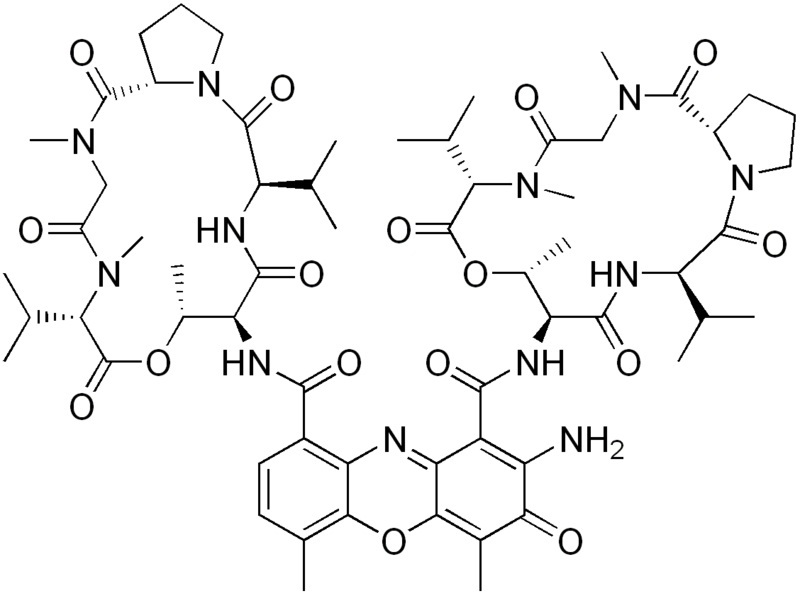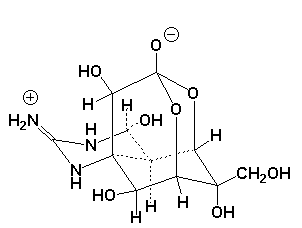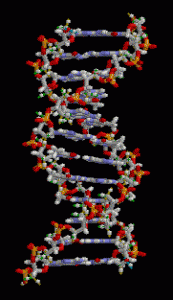Bicuculline
What is Bicuculline?
It is a plant alkaloid that consists of GABA antagonist properties. It is used for analysis of GABA function of the human nervous system. It is a light-sensitive Isoquinoline alkaloid that is extracted from plants like Dicentra Cucullaria.
Bicuculline History
This substance was first identified among other plant alkaloid extracts in 1932. It has been distinguished from Dicentra cucullaria, Fumariaceae, Adlumia fungosa and a number of Corydalis species.
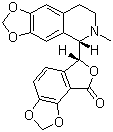 Picture 1: Bicuculline Molecular Structure
Picture 1: Bicuculline Molecular Structure
Source: chemblink.com
Where is Bicuculline Found?
This alkaloid can be extracted from plants that belong to the family Fumariaceae.
Bicuculline Pronunciation
It is pronounced as bī′kū-kyū′lēn.
Bicuculline Action
The main action of this alkaloid is on the ionotropic GABAA receptors. These are ion channels that are mainly associated with the passage of chloride ions through the cell membrane. The ionotropic GABAA receptor gives rise to anxiety in humans. Drugs that aim at treating anxiety actually target the GABAA receptors. Mild drug dosage reduces anxiety while a greater dose can lead to sedation or sleep. In case of a medicinal overdose, death may occur. Bicuculline administration needs to be monitored by professional medical care providers. Overdose of the alkaloid may give rise to life-threatening consequences for patients.
Some of the drugs that target these receptors include
- Muscimol
- Gaboxadol
- Nonbenzodiazepines
- Barbiturates
- Ethanol
- Neuroactive steroids
- Inhaled anaesthetics
- Picrotoxin
- Bicuculline benzodiazepines
Bicuculline Epilepsy Use
Bicuculline inhibits the influence of the GABAA receptors on specific neurons. This is the reason why the substance is said to imitate epilepsy. This property of this alkaloid is utilized in laboratories around the world. Researchers use the GABA receptor-antagonist properties in the in vitro analysis of epilepsy. The study is usually carried out in cortical or hippocampal neurons in organized rodent brain slices.
The International Union of Basic and Clinical Pharmacology (IUPHAR) is a voluntary scientific organization that has set Bicuculline sensitivity as a main criterion in defining GABAA receptors.
Other Bicuculline Uses
Apart from being a potent antagonist of GABAA receptors, this alkaloid can also be used for other purposes. These include
Potassium Channel Blocking
The substance can be used to obstruct Ca2+-activated potassium channels.
Regulating Phrenic Nerve Bursts
This substance can be used to enhance the amplitude of the Phrenic nerve bursts. Phrenic nerve is one of two nerves that originate from the base of the cervical spine and travels down the thorax to stimulate the diaphragm and regulate breathing. The alkaloid can also change the internal and duration of bursts.
Bicuculline Chemical Information
The molecular mass of this alkaloid is 367.352 g/mol. Its chemical formula is C20H17NO6.
Bicuculline Solubility
This substance is insoluble in water. Bicuculline methiodide is a form of this alkaloid that is capable of being dissolved in water. It can be dissolved in water that has a concentration of 10 milligrams per milliliter.
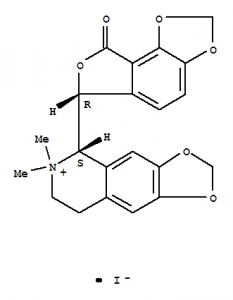
Picture 2: Bicuculline Methiodide
Source: guidechem.com
- References
- http://dictionary.sensagent.com/Bicuculline/en-en/
- http://www.wrongdiagnosis.com/medical/bicuculline.htm
- http://wrongdiagnosis.pubs.righthealth.com/topic/Bicuculline?as=clinks&ac=1425&afc=2168586466&p=cl1
- https://www.ncbi.nlm.nih.gov/pmc/articles/PMC3651659/
